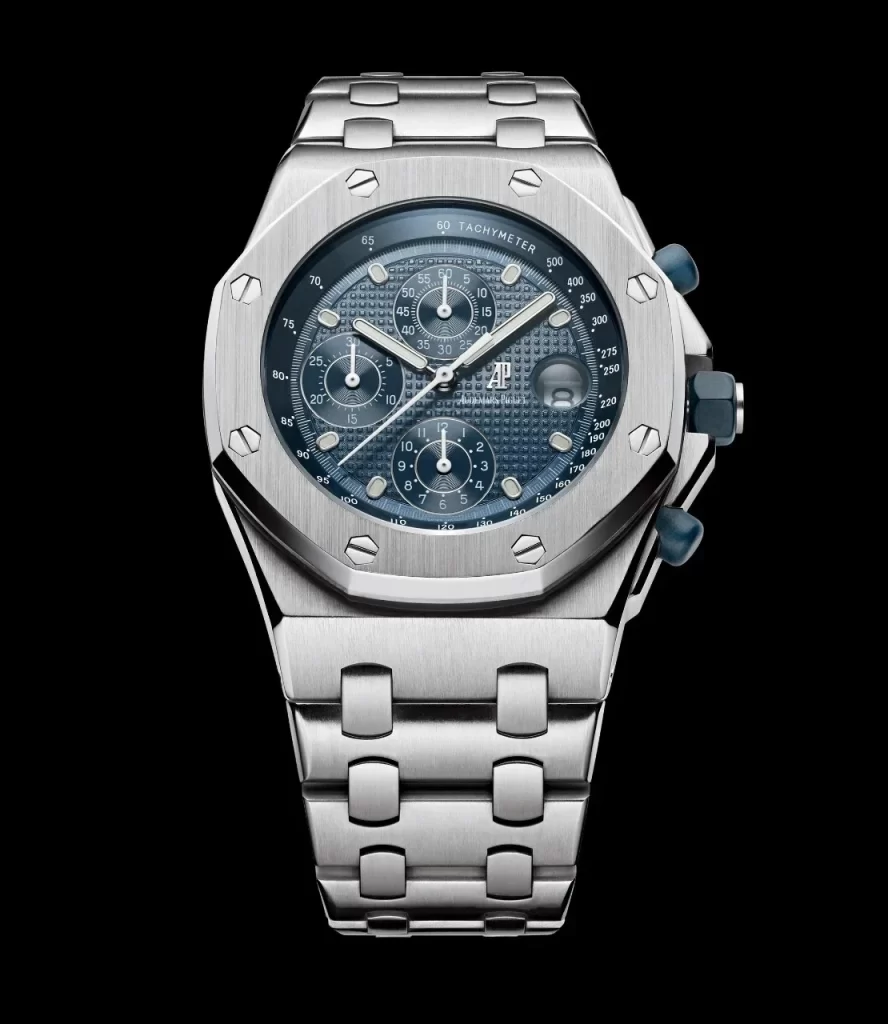The inaugural UK best online replica Audemars Piguet Royal Oak Offshore watches of 1993 had a stainless steel 42mm diameter case (produced by the Geneva manufacturer Centror) with a 14.05mm thickness and blue Therban (a type of rubber that is ultra-resistant to temperature, abrasion, steam and gas) chronograph pushers and crown. The watch had an octagonal bezel lined with a thick rubber gasket, compressed between the bezel and the case middle for both aesthetic and functional reasons, eight signature hexagonal “screws”, a blue Petite Tapisserie dial, and alternating satin-brushed and polished surfaces.

There was a tachymeter scale on the dial’s outer flange, and the sub-dials – running seconds, 30-minute and 12-hour counters – were positioned in a 12-6-9 layout, with a date window at 3 o’clock. Model 25721ST was one of the very few chronographs on the market offering water-resistance of 100 metres. The first high quality copy Audemars Piguet Royal Oak Offshore watches were also resistant to magnetic fields, as the space inside the case enabled the addition of a soft iron cage to protect the movement.
The first trial series had no mention of the Offshore name on the screw-down caseback; only Royal Oak was engraved, done “probably to protect the Offshore trademark in case of commercial failure of this non-conformist top perfect fake watches”. The reference 25721ST received its first engravings from case No. 100 onwards.
Even though Audemars Piguet had already begun the first attempts to protect the push-pieces and crown by coating them with synthetic material as early as May 1990, in July 1993, after the official launch of the UK cheap super clone watches, the development was still incomplete. The Jura-based company Pibor (BIWI), which developed the technology, explored uncharted territory by guaranteeing perfect adhesion between metal and rubber, shape retention, and enduring resistance to wear, water, and temperature changes.
To equip the inaugural Royal Oak Offshore, 1:1 buy replica Audemars Piguet watches opted to rely on a tried-and-tested self-winding movement made by Jaeger-LeCoultre, which belonged to the 889 families of calibres, with a chronograph module produced by Dubois Dépraz, with movement designated as cal. 2126/2840.